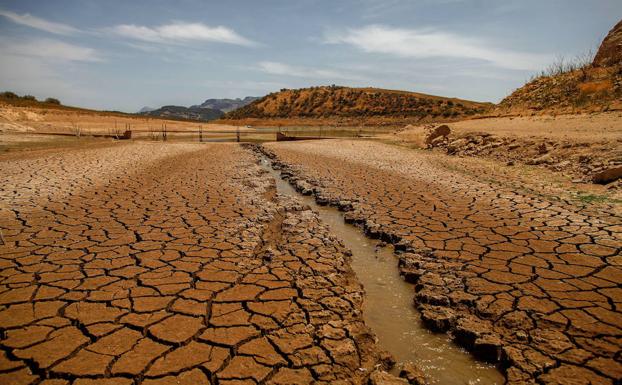Global temperatures headed towards alarming highs and extreme weather proliferated as the world’s two biggest polluters, China and the United States, sought on Monday to reignite climate talks.
With scientists saying the target of keeping global warming within 1.5 degrees Celsius of pre-industrial levels is moving beyond reach, evidence of the crisis was everywhere.
A remote town in China’s arid northwest, Sanbao, registered a national record of 52.2 Celsius (126 Fahrenheit).
In the United States, a quarter of the population fell under extreme heat advisories, partly due to a heat dome that has settled over western states.
“In many parts of the world, today is predicted to be the hottest day on record,” tweeted Tedros Adhanom Ghebreyesus, director-general of the World Health Organisation.
In a resumption of diplomacy on global warming between the two superpowers, U.S. climate envoy John Kerry met Chinese counterpart Xie Zhenhua in Beijing, urging joint action to cut methane emissions and coal-fired power.
“In the next three days we hope we can begin taking some big steps that will send a signal to the world about the serious purpose of China and the United States to address a common risk, threat, challenge to all of humanity created by humans themselves,” Kerry said, noting the proliferation of storms and fires.
Prolonged high temperatures in China are threatening power grids and crops and raising concerns about a repeat of last year’s drought, the most severe in 60 years.
Typhoon Talim was gaining strength and due to make land at night along China’s southern coast, forcing the cancellation of flights and trains in the regions of Guangdong and Hainan.
In South Korea, torrential rains left 40 people dead as river levees collapsed causing flash floods. They followed the heaviest recorded rain in the capital Seoul last year.
An anticyclone nicknamed Charon – who in Greek mythology was the ferryman of the dead – could cause Europe to break its highest recorded temperature of 48.8C, possibly on the Italian island of Sardinia.
‘VERY SCARY’
The high temperatures are especially risky for people like teenage sisters Matilde and Angelica Aureli from Rome, who during extreme heat can only venture outside after 9 p.m. because they are albinos.
“In the summer, it is getting hotter year by year… it’s actually very scary as an experience because for people with albinism, the sun keeps getting worse,” Matilde said.
Tourists in the Italian capital cooled themselves under giant fans set up outside the Colosseum and took turns to drink from a fountain near the Spanish Steps.
In Spain, temperatures could rise to as high as 44C in some regions. However, a forest fire on the island of La Palma in the Canaries that forced the evacuation of 4,000 people was being brought under control as temperatures fell, local official Sergio Rodriguez said in an interview on TVE.
Scientists have long warned that climate change, caused by CO2 emissions from burning fossil fuels, will make heatwaves more frequent, severe and deadly.
The European Union’s Copernicus Climate Change Service says 2022 and 2021 were the continent’s hottest summers on record.
Buildings and roads are storing heat during the day and releasing it at night, causing temperatures to remain up to 4C higher than in surrounding areas and contributing to health risks for vulnerable people, said Andreas Flouris, associate professor of physiology at Greece’s University of Thessaly.
“We’ve seen that this night-time temperature increase in cities often contributes a lot more than we thought to mortality,” Flouris said.
UNCHARTERED TERRITORY
As many as 61,000 people may have died in Europe during heatwaves last summer, with a repetition feared this season.
“My worry is really health – the health of vulnerable people who live just below the rooftops of houses which are not prepared for such high temperatures,” said Robert Vautard, a climate scientist and director of France’s Pierre-Simon Laplace Institute. “That could create a lot of deaths.”
In Cyprus, a 90-year-old man died and three people were in hospital with heat stroke symptoms as temperatures spiked at over 45C on Saturday, authorities said.
The heat dome across the western United States also helped to generate heavy rains in the northeast, claiming at least five lives. The heat warnings spread as far as Florida.
In California’s Death Valley, tourists gathered in Furnace Creek on Sunday in anticipation of witnessing the hottest recognised temperature on earth: 134 Fahrenheit (56.7C) in 1913, according to the World Meteorological Organization.
They cheered as a digital display of 132F ticked up to 133F while National Park rangers stood by in case anyone succumbed to heat stroke.
“It’s my first time being here so I feel it would be really cool to be here for the hottest day ever on Earth for my first time,” said Kayla Hill, 24, of Salt Lake City, Utah.
Carlo Buontempo, director of the European Union’s Copernicus Climate Change Service, said there was a clear pattern of heatwaves becoming more common as predicted by scientists.
“We are already in uncharted territory, completely. We have never seen anything like this in our living memory, in our history,” Buontempo said.
























